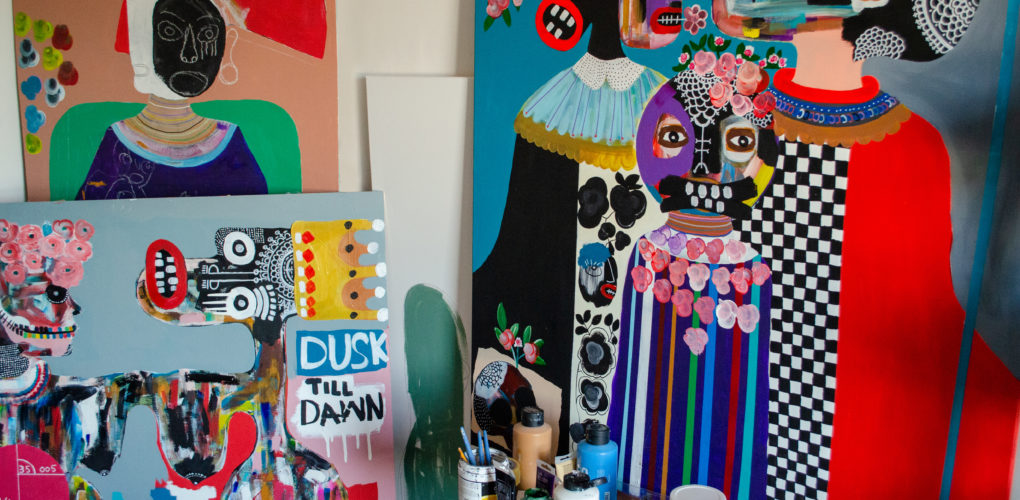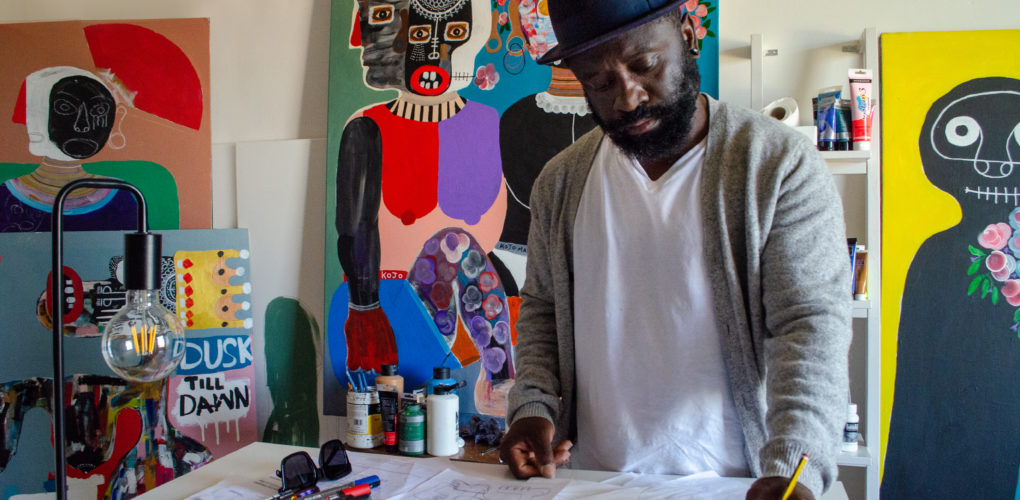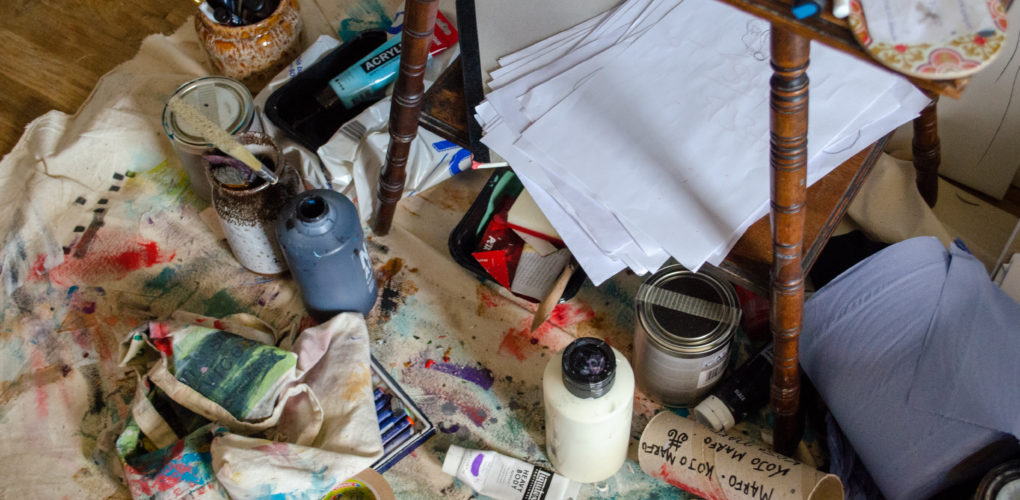One to Watch
 Kwadwo ‘Kojo’ Marfo On African Beauty & Identity
Kwadwo ‘Kojo’ Marfo On African Beauty & Identity
Kwadwo ‘Kojo’ Marfo is an artist based in England who brings his Ghanian heritage to the forefront in his vibrant paintings. Particularly interested in traditional artifacts and craftsmanship from his native Africa, he uses these elements to juxtapose visions of his past and his present life as part of his personal intiative toward authenticity and growth. His work has been exhibited internationally including Paris, Tokyo, Amsterdam, New York City, Barcelona, and London.
1. Tell us about who you are and what you do. What’s your background?
My name is Kojo Marfo. I’m a visual artist from Ghana now living in the UK.
2. What does your work aim to say? What are the major themes you pursue in your work? Give an example of a specific work that demonstrates it.
My work seeks to reestablish the richness that is lacking in mainstream representations of African people and explore a self-referential perspective of the Black image. My practice aim is to create genuine and authentic figurative abstractions that make up the beautiful continent of Africa, to reveal the hidden beauty woven into Africa’s social and geographical fabric.
A uniquely vital aspect of my practice is rooted in traditional Akan artifacts I saw as a child, growing up in Ghana. I want people to see my work as a reflection and evolution of my Akan culture, a culture that has shaped and continues to shape me.
3. Can you walk us through your process for creating a work from beginning to end?
Usually, I try not to have any preconceived notion of what I’m doing. The composition is based on what I am thinking at that moment and sometimes incidents throughout the day are incorporated as well, to produce something that has real and instant energy. I have stashed away images of traditional African carvings so whenever I run out of inspirations I go to those images as well.
I also mostly paint at night as the quietness gives me the needed sense of calmness and focus.
4. Who are your biggest influences and why?
Basquiat, Ibrahim El Salahi, Wilfredo Lam, and Pablo Picasso. Picasso had to reinvent historical paintings and drew upon what had always been a counter-traditional depiction of human situations conceived in poetic terms. Picasso was never afraid to experiment, and to borrow and to combine and to challenge himself and his viewers. Indeed, he was often accused of copying, yet he was no plagiarist. He searched for stimulation and new ideas at every turn.
5. Why art?
I was interested in the arts because I was surrounded by artisans growing up, people sculpting and carving. But painting seemed to be the more straight forward way to recreate images in my own understanding and use them to comment on society and address certain issues to start a conversation. That’s why I decided to become an artist and to highlight my culture, my background, and my traditions, even if it is not always “good” or “nice”. Becoming an artist was a good way for me to express my experiences and observations, holding a mirror back to society.















